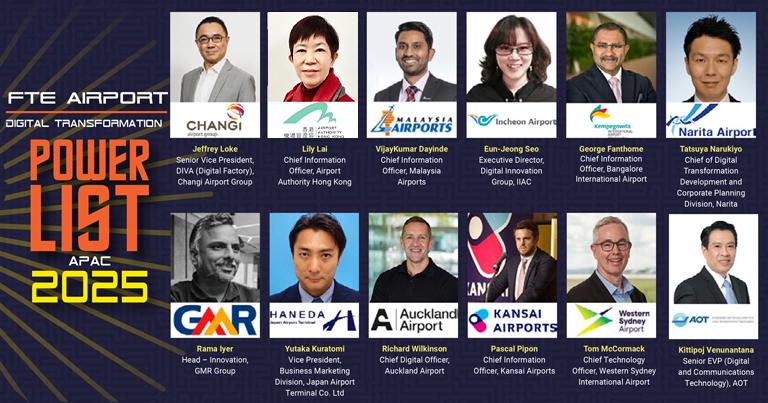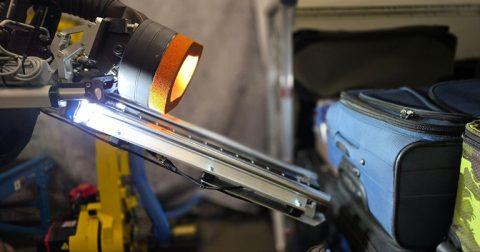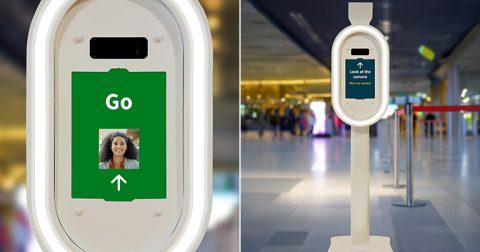Future Travel Experience is excited to unveil the FTE Airport Digital Transformation Power List Asia-Pacific 2025. Here we shine a light on those who are pioneering new approaches that have the potential to improve travel for passengers and make the industry safer, more efficient and commercially successful. The Asia-Pacific edition champions the most transformative change enablers within the airport and airline industry in the APAC region for their outstanding efforts to lead how their organisation has embraced digital innovation, reimagined customer experiences and delivered new approaches to operations. In 2025, FTE is more committed than ever to supporting digital transformation efforts in the industry through the FTE Digital, Innovation & Startup Hub, which is a truly unique community designed specifically for the individuals and organisations who are at the forefront of digital transformation and innovation in aviation. The FTE Hub is focusing on three key themes this year – Artificial Intelligence (AI), Robotics, and Internet of Things (IoT) – and in alignment with that, the Power List recognises those that are leading key digital transformation efforts. In recognition of their leadership and achievements, each member of the Power List will receive a complimentary “Golden Ticket” to APEX FTE Asia Expo, taking place in Singapore on 11 to 12 November 2025. After extensive research into each candidate, we believe the following 12 executives have been at the forefront of innovation, driving transformational change for their organisations and the wider industry.
Jeffrey Loke, Senior Vice President, DIVA (Digital Factory), Changi Airport Group
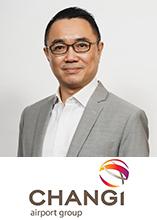
Changi Airport Group’s digital factory known as DIVA – which stands for Digital, Innovation, Ventures and Analytics – is helping transform operations and further enhance the traveller experience. As Senior Vice President, DIVA (Digital Factory), Jeffrey Loke leads the team developing, experimenting and launching new digital products and services.
Changi is pioneering the use of artificial intelligence (AI), data analytics, automation, and more to transform engagement across the end-to-end traveller journey. Its ‘SMART Airport Vision’ focuses on using advanced technologies like AI, sensors, and data analytics to create a more seamless, efficient, and personalised travel experience for passengers and improve operational efficiency. Key initiatives include leveraging AI for security screening and operations, integrating self-service and biometric systems for faster check-in, and using immersive technology to enhance passenger comfort and engagement. The vision also emphasises sustainability and a user-centric design, positioning Changi as a global leader in smart airport development.
Changi is also leveraging innovative technologies such as Extended Reality, Machine Learning, Internet of Things and edge computing to enable the airport to seamlessly engage travellers at various touchpoints, from before they arrive at the airport to after they leave.
Changi Airport Group is a Headline Partner of APEX FTE Asia Expo, taking place in Singapore on 11 to 12 November 2025. Hear more from Changi Airport Group on the Premium Conference. Jayson Goh, Executive Vice President, Airport Management, Changi Airport Group, is participating in the Opening Keynote Panel – ‘Leadership strategies to maximise capacity, operational efficiency, customer experiences, revenues and workforce, and be ready for change in the Asia-Pacific region and beyond’. Meanwhile, Jeffrey Loke, Senior Vice President, DIVA (Digital Factory), Changi Airport Group, is speaking in a session focused on ‘Embracing collaboration and commercial innovation to create new revenue & business opportunities’.
View the APEX FTE Asia Expo Premium Conference agenda >> View the Expo Floor Schedule >> Register for APEX FTE Asia Expo 2025 >>
Lily Lai, Chief Information Officer, Airport Authority Hong Kong
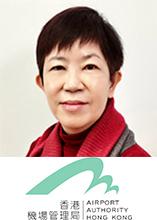
As Chief Information Officer, Lily Lai leads the teams responsible for Airport Authority Hong Kong’s (AAHK) continuing efforts to work with business partners developing and adopting different technological and innovative solutions as part of its ‘Smart Airport’ journey.
Hong Kong International Airport (HKIA) is leveraging a high-performance Enterprise 5G Infrastructure to drive digitalisation towards Airport 4.0, transforming from a ‘city airport’ into a smarter, safer, and more convenient ‘Airport City’. The Enterprise 5G Infrastructure at HKIA allows all Hong Kong local mobile network operators and HKIA’s private 5G network to offer 5G services through a commonly shared infrastructure.
In pursuit of global leadership in smart airport development, AAHK has leveraged cutting-edge 5G applications to elevate both operational efficiency and passenger experience. Over the past 12 months, AAHK has introduced innovative services across six pivotal operational domains:
- Autonomous vehicles: in 2025, AAHK expanded its autonomous vehicle services with a total of 70 vehicles equipped with advanced autonomous driving technology.
- Terminal operations: AAHK deployed over 150 units of 5G-enabled movable display panels to provide real-time flight information, wayfinding assistance, and notifications from government authorities. Furthermore, the implementation of a gantry lighting system with 5G IoT capabilities, allows for remote equipment monitoring and dynamic light adjustment.
- Passenger experiences: cloud-based, 5G-enabled smart check-in kiosks offer flexible deployment and expedite passenger processing, also serving as registration points for the ‘Flight Token’ biometric system. In preparation for the opening of HKIA Terminal 2, the kiosk system will expand from 180 to 240 units, further enhancing operational efficiency and security.
- Security and access control: a video analytics system featuring advanced biometric facial recognition has been deployed in terminal areas. Leveraging 5G’s high-speed connectivity and high-definition video monitoring, the system supports passenger behaviour analytics and strengthens security controls within designated airport locations.
- Internet of Things (IoT): the high capacity of the private 5G network supports a larger number of connected devices, enabling real-time data collection for preventive maintenance and infrastructure monitoring.
- Ground support: the deployment of autonomous apron line marking robots utilising private 5G for reliable, low-latency connectivity. These robots automate complex line marking on taxiways and runways, significantly enhancing safety, efficiency, and resource utilisation.
Hear more from Airport Authority Hong Kong on the Expo Stage at APEX FTE Asia Expo, taking place in Singapore on 11 to 12 November 2025. Hercules Lai, Manager, Future Travel Experience, Airport Authority Hong Kong, is participating in a session focused on ‘Improving efficiency and creating more seamless experiences through technology and digital advancements’ with a presentation titled ‘How every tweak transforms the Flight Token (aka One ID) experience and enhances efficiency at Hong Kong International Airport’.
View the APEX FTE Asia Expo Premium Conference agenda >> View the Expo Floor Schedule >> Register for APEX FTE Asia Expo 2025 >>
VijayKumar Dayinde, Chief Information Officer, Malaysia Airports

Malaysia Airports is driving digital transformation across its airport network as a key strategic initiative. The focus is on enhancing service quality through practical innovations that prioritise passenger convenience, operational efficiency, and digital readiness. Smart passenger-centric technologies are empowering travellers with greater control and convenience in their journey.
As a critical initiative in shaping an agile, connected, and innovation-led airport ecosystem, Malaysia Airports’ digital innovation framework – Airports 4.0 – focuses on four key digital transformation themes – terminal operations, passenger experience, staff mobility, and safety & security. This digital transformation is continuing, enhancing passenger experience through initiatives such as a mobile app, surveillance for crowd management and retail analytics, single token for a contactless journey, connectivity and Airport Collaborative Decision Making (ACDM) to drive Malaysia Airports’ vision of a “connected and digital airport”.
Malaysia Airports also recently partnered with WEBQLO to transform how airports connect with travellers – blending AI-powered insights, strategic content, and real-time engagement to create stronger, more meaningful connections with travellers at every touchpoint.
These efforts are supported by a strong network infrastructure enabling 5G, Wi-Fi 6, and Internet of Things (IoT) technologies, as Malaysia Airports creates a seamless, connected, and digital airport environment.
As Chief Information Officer, VijayKumar Dayinde is a driving force behind Airports 4.0 and Malaysia Airports’ digital transformation efforts.
Eun-Jeong Seo, Executive Director, Digital Innovation Group, Incheon International Airport Corporation

As Executive Director of Incheon International Airport Corporation’s Digital Innovation Group, Eun-Jeong Seo leads digital transformation initiatives across all airport operations. A key part of these efforts is driving artificial intelligence (AI)-driven automation and innovation.
Incheon International Airport Corporation’s Fast Travel program is revolutionising the passenger experience by providing seamless, hands-free travel throughout the entire journey. By analysing customer demands and creating a ‘Journey Map’ that identifies key priorities – such as time efficiency, convenience, and ease of use – the airport is enhancing its services at every touchpoint. This approach has led to the implementation of self-service check-in kiosks, automated bag drop systems, and biometric-enabled e-gates. Looking ahead, Incheon plans to further enhance this seamless experience through the One ID initiative, which aims to connect fragmented services across airports globally. This collaboration with other airports and industry stakeholders will allow passengers to travel with a single, integrated identification system, eliminating the need for multiple checks along their journey.
Additionally, Incheon Airport has identified robotics and artificial intelligence (AI) as crucial technologies for improving operational efficiency and further enhancing the passenger experience. The airport has actively partnered with startups and other industry organisations to run Proof of Concepts (PoCs) in robotics and AI, exploring new solutions for automating processes and improving customer interaction.
One of the most notable innovations at Incheon is its involvement in the BOOST initiative – a groundbreaking project that aims to transform baggage handling through the integration of robotics and automation. BOOST, developed in partnership with Future Travel Experience via the Baggage Innovation Working Group (BIWG), focuses on automating the baggage process to increase speed and efficiency. As part of this effort, Incheon is tackling the challenge of handling odd-sized and heavy baggage by utilising Doosan Robotics. This robotic solution automates the classification and transportation of such items to the appropriate terminal buildings, significantly reducing the workload of baggage handlers and improving overall operational efficiency.
Finally, Incheon is also pioneering the use of Extended Reality (XR) and the Metaverse to provide an innovative indoor wayfinding service. By leveraging 3D spatial data and Augmented Reality (AR) technology, the airport offers passengers an immersive and intuitive way to navigate the airport’s complex spaces.
George Fanthome, Chief Information Officer, Bangalore International Airport Limited
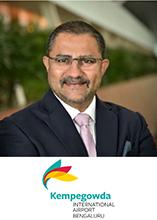
Bangalore International Airport Limited (BIAL), operator of Kempegowda International Airport (BLR) is committed to driving innovation at every level, embracing the latest technological innovations as it aims to take a leadership position in the aviation industry with a ‘Future Ready’ airport.
As part of these efforts, BIAL has collaborated with KPMG in India to harness the transformative capabilities of generative AI (GenAI). This partnership aims to redefine airport operations, enhance efficiency, and establish new global benchmarks in aviation by leveraging pioneering GenAI models within a flexible and adaptable architecture. The cutting-edge GenAI platform, specifically tailored to BIAL’s operational ecosystem, is intended to redefine airport operations while significantly enhancing customer experience. By processing and analysing vast datasets in real-time, powered by a highly flexible and efficient tech stack, the platform aims to enable smarter decision-making. Its ability to recognise patterns and forecast trends could empower airports to proactively anticipate and mitigate disruptions, helping ensure smoother operations and greater resilience. By integrating advanced GenAI models, BIAL seeks to establish a future-ready airport ecosystem that prioritises efficiency, security, and sustainability.
As Chief Information Officer, George Fanthome is leading the teams strengthening BLR Airport’s digital roadmap, leveraging the power of cloud computing and digital technologies, and creating an environment for startups to innovate. The airport has entered the Metaverse with the ‘BLR Metaport’, while ‘BLR Pulse’ provides a personalised digital travel buddy. The omnichannel app allows passengers to navigate within the terminal buildings and take control of their journey at departures and arrivals by providing essential information about the airport in real-time, as well as an interactive chatbot.
Indeed, BLR Airport’s digital roadmap uses a combination of technologies including cloud computing, blockchain, Internet of Things, machine learning, artificial intelligence, robotics, augmented and virtual reality, and more.
Tatsuya Narukiyo, Chief of Digital Transformation Development and Corporate Planning Division, Narita International Airport Corporation

Narita International Airport’s ‘AIR Narita’ system innovation project was launched to rebuild multiple systems into an integrated format. The airport is building the foundations for continuous business optimisation by integrating all services and systems into one across all departments, with the main aim of contributing to sustainable growth.
Tatsuya Narukiyo, Chief of Digital Transformation Development and Corporate Planning Division, is a driving force behind the teams proactively incorporating robotics, artificial intelligence (AI) and other cutting-edge information and communications technologies to promote business efficiency and enhanced productivity. Narita is promoting the use of vehicles with driverless technology and is also moving forward with the use of AI with the aim of improving customer satisfaction. It has introduced an AI chatbot service, called BEBOT, to provide real-time responses to customers. Meanwhile, Narita has also introduced Japan’s first end-to-end biometric boarding process, enabling passengers to travel through the entire airport without using paper documents or touching screens.
Narita is driving airport-wide digitalisation and actively promoting the use of AI to improve operational efficiency, enhance safety, and elevate the passenger experience. The airport is integrating emerging technologies to build smarter, more sustainable operations. This includes applying real-time AI analysis to operational data and introducing predictive preventive maintenance. Narita is also promoting the Fast Travel initiative to automate and streamline passenger processing. Technologies supporting this include facial and image recognition, automated boarding bridge operations, and AI chatbot support. The aim is also to provide more personalised information and services to each passenger, creating a travel experience that’s never been seen before, using agentic AI, physical AI, and the additional workforce capacity made possible by automation to deliver more human-centred service.
Narita believes in the power of collaborative innovation and is also a member of the pioneering Airports for Innovation network – a global coalition of 10 airports working together on next-generation solutions to enhance the passenger experience, which recently launched its first joint ‘Call4Startups’.
Rama Iyer, Head – Innovation, GMR Group

As one of the largest private airport companies in India, GMR Group stands as a pioneering force in advancing technological innovations within the aviation landscape. It has an unwavering commitment to innovation and leadership in the digital and emerging technology arenas, with a focus on the delivery of superior customer experiences, revenue enhancement, cost reduction opportunities, and the establishment of agile and efficient internal processes.
As part of its collaborative approach to innovation GMR Group last year entered a strategic partnership with IndiGo Airlines, forming a digital consortium aimed at reshaping the landscape of the Indian aviation industry. This partnership brings together the diverse strengths of GMR Group’s infrastructure expertise and IndiGo Airlines’ innovative approach to air travel. The consortium is focused on deploying cutting-edge technologies to enhance operational efficiency, passenger experience, and overall industry sustainability.
Rama Iyer, Head – Innovation, is a driving force behind GMR Group’s culture and philosophy of open innovation that enables the free flow of ideas and resources between GMR and external ecosystem partners via GMR Innovex. As the innovation vertical of GMR, GMR Innovex has introduced a Next-Gen Intelligent Airport Operating System (iAOS) – a ground-breaking platform leveraging artificial intelligence (AI), machine learning (ML), and the Internet of Things (IoT) to transform airport operations. By creating a digital twin of the airport, iAOS offers a comprehensive, real-time view of airside, landside, and terminal activities, empowering airports to become smarter, more efficient, and passenger-centric. By leveraging AI, ML and IoT, iAOS has the potential to set a new industry standard for intelligent airport management.
Yutaka Kuratomi, Vice President, Business Marketing Division, Japan Airport Terminal Co. Ltd
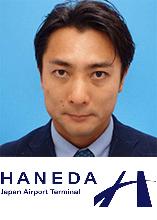
Japan Airport Terminal, the organisation responsible for the construction, management, and operation of Haneda Airport’s terminals, is at the forefront of airport innovation with its visionary “terminal.0 HANEDA” initiative. This bold, cross-industry collaboration is aimed at transforming the aviation sector by integrating cutting-edge technologies, enhancing sustainability, and reimagining the passenger journey.
The “terminal.0 HANEDA” initiative seeks to redefine the airport experience by leveraging artificial intelligence (AI), robotics, automation, biometrics, the Internet of Things (IoT), and more. These technologies will optimise airport operations, streamline passenger processes, and improve overall efficiency. This ambitious project is set to roll out ground-breaking solutions by 2026, with the goal of deploying scalable innovations that can be replicated at airports around the world.
One of the key areas of focus for Japan Airport Terminal is improving passenger flow and operational efficiency. AI systems will predict peak travel times, enabling proactive staffing and resource allocation, while robotics and automation will play pivotal roles in baggage handling, reducing human workload and enhancing speed. Biometric technologies, such as facial recognition, will streamline the check-in, security, and boarding processes, providing passengers with a smoother, faster journey.
The initiative also emphasises sustainability, integrating green technologies and eco-friendly practices throughout the airport. With innovations like solar energy, energy-efficient designs, and waste reduction programs, Haneda Airport is setting new benchmarks for sustainable airport management. This commitment to sustainability is not only a core part of the “terminal.0 HANEDA” initiative, but also aligns with global efforts to reduce the carbon footprint of the aviation industry.
By collaborating with technology companies, startups, and other industry stakeholders, Japan Airport Terminal is driving the development of scalable solutions that will revolutionise how airports operate. The goal is to not only improve the passenger experience but also to advance airport sustainability and make Haneda a global leader in creating smart, sustainable airports.
Through the “terminal.0 HANEDA” initiative, Japan Airport Terminal is solidifying its position as a pioneer in airport innovation, setting a new standard for the future of aviation. This transformation will reshape airport operations, enhance passenger satisfaction, and provide a blueprint for the airports of tomorrow.
Richard Wilkinson, Chief Digital Officer, Auckland Airport

Auckland Airport is undergoing a 10-year digital transformation, investing heavily in technology like artificial intelligence (AI), robotics and automation to improve customer experience and operational efficiency. The strategy, guided by its Chief Digital Officer, Richard Wilkinson, aims to deliver a more seamless and innovative experience for travellers by enhancing operations and services. Initiatives include implementing Airport Collaborative Decision Making (A-CDM) for smarter airport management and using AI to personalise customer journeys. The airport is also focusing on a robust and secure digital infrastructure by implementing advanced cybersecurity measures for its interconnected networks.
Recently unveiled plans for a sweeping check-in upgrade lays the digital foundations for a technology-led travel future. Over the next four years, the existing check-in hall will be transformed, turning it into a 13,000sqm digital, user-focused departures area designed for the modern traveller. A fast, seamless check-in experience will be powered by smart technology. Alongside expanding the check-in space, Auckland Airport is introducing a digital overhaul that will smooth the experience for travellers and sets it on the path to adopting future technologies.
As Chief Digital Officer, Richard Wilkinson is leading a bold digital transformation across one of New Zealand’s most critical pieces of infrastructure, modernising core systems and platforms, enhancing resilience across mission-critical operations, uplifting precinct-wide digital infrastructure, and unlocking value through data, insights, and automation. It’s a unique blend of strategic vision, operational delivery, and futureproofing for a high-growth, high-expectation environment. The focus is on building a modern, connected, human-centred digital capability that will serve the airport well into the future.
Pascal Pipon, Chief Information Officer, Kansai Airports
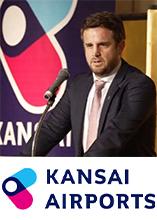
Kansai Airports – operator of Kansai International Airport, Osaka International Airport, and Kobe Airport – is part of the network of VINCI Airports (a Corporate Partner of the FTE Digital, Innovation & Startup Hub). It is leveraging digital solutions, such as self-service, mobile services and biometrics, in order to achieve seamless travel. The aim is to integrate all steps in the passenger journey within one complete digital experience.
The teams led by Pascal Pipon, Chief Information Officer, are driving these efforts. Kansai Airports has, for example, deployed intelligent check-in kiosks that identify bottlenecks in passenger flow, eliminate congestion and contribute towards a fully connected passenger experience. Through a number of inbuilt technologies, such as collision avoidance, the kiosks move swiftly between different areas of the airport when required. Kansai Airports has also sought to introduce robotics and artificial intelligence (AI) technologies as it moves towards automation across its entire portfolio. Automation is helping increase capacity by serving more passengers, more efficiently, while better serving airline partners.
This year, Kansai Airports inaugurated and major modernisation and extension at Kansai International Airport (KIX). This includes the deployment of innovations to streamline and improve the passenger journey, including new check-in areas with a self-bag drop system shared between airlines, 10 latest-generation security screening inspection lanes using technologies based on AI, immigration control procedure by eGates, and call-to-gate technology for better passenger comfort and optimal gate allocation.
Kansai Airports is also participating in a partnership that aims to start the first large-scale commercial production of Sustainable Aviation Fuels in Japan. It has, additionally, entered a strategic partnership with Airbus to work together towards the introduction of hydrogen-fuelled aircraft – a first of its kind at an airport in Japan.
Tom McCormack, Chief Technology Officer, Western Sydney International Airport

As Chief Technology Officer, Tom McCormack is responsible for the design and implementation of all technology and cybersecurity aspects of what will be Australia’s most technologically advanced airport. He is passionate about technology leaders using a strong voice at the executive level to create new levels of digital efficiency and advantage for business and in doing so grow the abilities of technology professionals and technology providers.
Western Sydney International Airport – described as Australia’s first ‘smart airport’ – is scheduled to open next year, with the objective of delivering seamless travel experiences for passengers through smart design, technology and 24/7 service. The infrastructure project, planned and designed with 21st century thinking, aims to deliver simple and intuitive wayfinding around the terminal that will be easy to navigate. The airfield will also be able to support emerging technologies such as electric aircraft in the future.
The new airport will use biometric identity verification as part of a broader aim to provide a seamless, touchless travel experience and streamline security checks, boarding, and immigration processes. Automated baggage systems and smart baggage handling technology will optimise efficiency. Western Sydney International Airport plans to use AI-driven data analytics for predictive modelling to optimise operations, improve passenger flow, and anticipate demand spikes. AI-powered crowd management solutions are also part of the strategic goals, helping to analyse and manage passenger density in real-time. The airport is also planning to offer high-speed connectivity with 5G networks to ensure seamless digital experiences for passengers, from real-time updates to mobile app usage.
As a member of the Western Sydney International Executive Team and leading the airport’s technology efforts, McCormack is empowered to create a digital-first, technology-enabled airport from scratch, utilising robotics and automation, Artificial Intelligence, and much more.
Hear more from Western Sydney International Airport in the Premium Conference at APEX FTE Asia Expo, taking place in Singapore on 11 to 12 November 2025. Alison Webster, Chief Customer and Commercial Officer, Western Sydney International Airport, is participating in a session focused on ‘Innovative airport expansion efforts that will deliver memorable travel experiences and enhanced operations’ with a presentation titled ‘Western Sydney International Airport will be a world-class smart airport, built to service 10 million passengers a year from the day it opens in 2026, but how will it deliver for its passengers and campus stakeholders through smart design, technology and 24-hour service?’
View the APEX FTE Asia Expo Premium Conference agenda >> View the Expo Floor Schedule >> Register for APEX FTE Asia Expo 2025 >>
Kittipoj Venunantana, Senior EVP (Digital and Communications Technology), Airports of Thailand
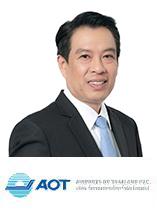
The Airports of Thailand (AOT) vision is to operate “the world’s smartest airports”, and innovation and digital technologies are central to its operations strategy. The teams led by Kittipoj Venunantana, Senior EVP (Digital and Communications Technology), are continuously applying Information Communication Technology (ICT) to support airport operation and internal affairs management. AOT has created a Digital Action Plan, which consists of: elevating service quality and security by applying ICT innovation; developing information systems and applying technology to increase management efficiency; strengthening its digital workforce; and developing and improving the ICT infrastructure to increase capability and support future demands.
AOT has set the direction in applying digital technology to enhance the passenger experience under the concept of ‘A Living Airport’. Highlights of AOT’s innovation projects include fast automatic self-check-in kiosks for passengers; self-bag-drop points with barcode luggage tags for effective tracking and management; passenger baggage reconciliation system; advanced passenger processing system; and the AOT mobile app, which provides passengers with real-time flight status, as well as information on shops and restaurants at the airports.
A key focus for AOT is the artificial intelligence (AI) to streamline passenger services and enhance security. It is implementing AI-powered solutions, including automated check-in kiosks and biometric identity verification systems. AOT’s commitment to modernisation aligns with its ongoing infrastructure expansion to handle increased air traffic. The combined strategy of AI integration and infrastructure expansion aims to modernise Thailand’s airports, enhancing passenger experience, operational efficiency and business performance.
